Light waves and their behavior in different mediums are essential for understanding various natural phenomena, especially in aquatic environments. If you’re planning a trip to Vietnam and want to explore its beautiful beaches or delve into its rich marine life, understanding how light interacts with water is crucial. SIXT.VN offers services to help you explore these underwater wonders, from providing travel tips to arranging tours. Let’s discover light transmission through water, underwater visibility, and the vibrant ecosystems that thrive beneath the surface with travel planning with ease.
1. What Exactly are Light Waves?
Light waves are a form of electromagnetic radiation, which is energy that travels through space. According to NASA, electromagnetic radiation consists of photons, which are discrete packets of energy that travel at the speed of light. These waves have properties of both particles and waves, allowing them to interact with matter in various ways.
Electromagnetic waves have two components: an electric field and a magnetic field. These fields oscillate perpendicular to each other and to the direction of the wave’s propagation. The frequency of the wave is the number of oscillations per second, measured in Hertz (Hz). The wavelength is the distance between two consecutive crests or troughs of the wave.
2. How Do Light Waves Behave?
Light waves exhibit several behaviors when they interact with matter, including reflection, refraction, absorption, and scattering.
-
Reflection: This occurs when light bounces off a surface. The angle of incidence (the angle at which light strikes the surface) is equal to the angle of reflection.
-
Refraction: This is the bending of light as it passes from one medium to another. The amount of bending depends on the refractive indices of the two media.
-
Absorption: This occurs when light energy is converted into other forms of energy, such as heat. Different materials absorb different wavelengths of light.
-
Scattering: This is the dispersal of light in various directions. Scattering can be caused by particles in the medium, such as dust or water molecules.
Understanding these behaviors is key to appreciating how light interacts with water and affects underwater visibility.
3. Can Light Waves Travel Through Water?
Yes, light waves can travel through water, but not as effectively as through air or a vacuum. Water absorbs and scatters light, which reduces both the intensity and distance that light can travel. The degree of absorption and scattering depends on the wavelength of light and the properties of the water, such as its purity and the presence of dissolved substances or particles.
4. What Happens When Light Enters Water?
When light enters water, several things happen:
-
Reflection: Some light is reflected off the surface of the water. The amount of reflection depends on the angle of incidence and the smoothness of the water surface.
-
Refraction: Light bends as it enters the water because water has a higher refractive index than air. This bending is what causes objects underwater to appear distorted or displaced.
-
Absorption: Water molecules absorb certain wavelengths of light more than others. Red and orange wavelengths are absorbed more quickly than blue and green wavelengths.
-
Scattering: Particles in the water, such as sediment, algae, and dissolved organic matter, scatter light in different directions. This scattering reduces the clarity and visibility of the water.
5. Why Does Water Absorb Light?
Water absorbs light due to the vibrational and rotational modes of water molecules. These molecules vibrate and rotate at specific frequencies that correspond to the energy of certain wavelengths of light. When light of these wavelengths strikes a water molecule, the molecule absorbs the energy and begins to vibrate or rotate more vigorously.
According to research from the University of California, Irvine, in 2018, water absorbs red and infrared light much more efficiently than blue and green light because the vibrational and rotational modes of water molecules are more closely aligned with the energy of these wavelengths. This is why red light disappears quickly as you descend into the water, while blue and green light penetrate deeper.
6. How Does the Depth of Water Affect Light Penetration?
The depth of water significantly affects light penetration. As depth increases, the intensity and color composition of light change.
-
Surface: Near the surface, all colors of the spectrum are present, but as depth increases, colors are selectively absorbed.
-
Shallow Waters (0-10 meters): Red light is almost entirely absorbed within the first few meters. Orange and yellow light are also significantly reduced.
-
Mid-depths (10-30 meters): Green and blue light dominate as they penetrate deeper than other colors.
-
Deep Waters (30+ meters): Only blue light remains, giving deep waters their characteristic blue hue. Beyond this depth, even blue light is eventually absorbed, and the environment becomes dark.
Understanding light penetration at different depths is crucial for divers and underwater photographers who need to adjust their equipment and techniques accordingly.
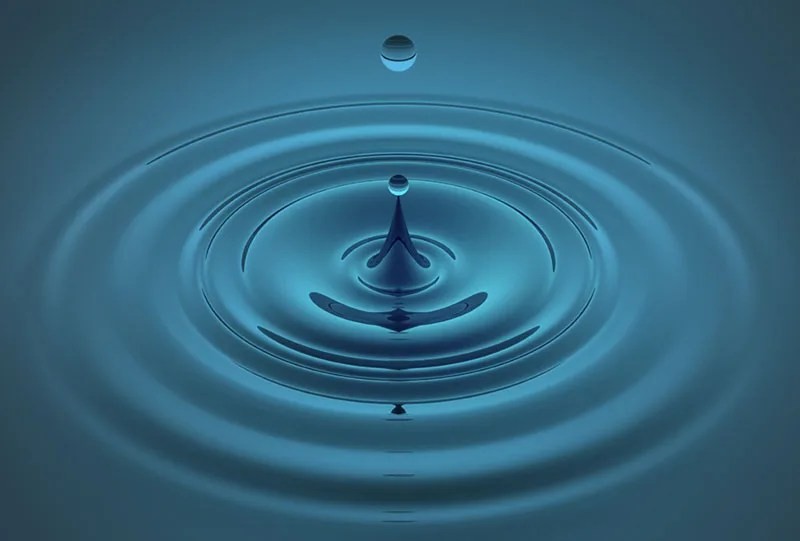 Light waves disperse differently at different depths.
Light waves disperse differently at different depths.
7. What Factors Affect Light Absorption in Water?
Several factors affect light absorption in water, including:
-
Wavelength of Light: Different wavelengths are absorbed at different rates, as previously mentioned.
-
Water Clarity: Clear water absorbs less light than turbid water. Suspended particles and dissolved substances increase absorption and scattering.
-
Dissolved Substances: Substances such as minerals and organic matter can absorb light. For example, tannins from decaying vegetation can give water a brown color and increase light absorption.
-
Temperature: Temperature can affect the absorption coefficient of water, though the effect is generally small.
-
Salinity: Saltwater absorbs slightly more light than freshwater due to the presence of dissolved salts.
8. What is the Role of Scattering in Underwater Visibility?
Scattering plays a significant role in underwater visibility. When light encounters particles in the water, it is deflected in various directions. This scattering reduces the amount of light that travels in a straight line, thereby reducing visibility.
There are two main types of scattering:
-
Rayleigh Scattering: This occurs when light interacts with particles that are much smaller than the wavelength of the light. It is more effective at scattering shorter wavelengths (blue light), which is why clear sky and clear ocean water appear blue.
-
Mie Scattering: This occurs when light interacts with particles that are about the same size as or larger than the wavelength of the light. Mie scattering is less wavelength-dependent and scatters all colors of light more evenly.
The amount of scattering depends on the concentration and size distribution of particles in the water. High levels of scattering can make the water appear murky and reduce visibility to just a few meters or even less.
9. How Does Light Affect Marine Life?
Light is crucial for marine life. It drives photosynthesis, which is the process by which plants and algae convert light energy into chemical energy. Photosynthesis forms the base of the food web in most aquatic ecosystems.
-
Photosynthesis: Phytoplankton, which are microscopic algae, use photosynthesis to produce organic matter, which is then consumed by other organisms.
-
Vision: Many marine animals rely on vision to find food, avoid predators, and navigate. The availability of light affects their ability to see underwater.
-
Behavior: Light can also influence the behavior of marine animals, such as their migration patterns and reproductive cycles.
According to a study by the National Oceanic and Atmospheric Administration (NOAA) in 2022, changes in light availability due to climate change and pollution can have significant impacts on marine ecosystems, affecting the distribution and abundance of marine species.
10. What is the Impact of Light Pollution on Marine Environments?
Light pollution, which is excessive or misdirected artificial light, can have detrimental effects on marine environments. Artificial light can disrupt the natural light cycles that marine organisms rely on for various biological processes.
-
Disruption of Behavior: Artificial light can disrupt the feeding, mating, and migration patterns of marine animals. For example, sea turtles are attracted to artificial light, which can lead them astray from their nesting beaches.
-
Impacts on Coral Reefs: Light pollution can inhibit the reproduction and growth of corals. Corals rely on natural light cycles to trigger spawning events, and artificial light can interfere with these cycles.
-
Effects on Plankton: Artificial light can affect the vertical migration of plankton, which can have cascading effects on the food web.
Addressing light pollution is important for protecting marine ecosystems and preserving their biodiversity.
11. How Can You Improve Underwater Visibility?
Improving underwater visibility can enhance your experience when diving, snorkeling, or engaging in underwater photography.
-
Choose Clear Water: Select locations with clear water and minimal suspended particles.
-
Dive During Good Weather: Avoid diving after heavy rains or storms, which can increase turbidity.
-
Use Artificial Lighting: Use underwater lights to illuminate the scene and restore colors that have been absorbed by the water.
-
Clean Your Mask: Ensure your mask is clean and free of scratches to maximize light transmission.
-
Position Yourself Correctly: Position yourself to minimize backscatter, which is light that is reflected back towards the camera or your eyes.
12. What are Some Examples of Underwater Optical Phenomena?
Several fascinating optical phenomena can be observed underwater:
-
Snell’s Window: This is a circular area of light that appears directly above an underwater observer. It is caused by refraction of light at the water’s surface.
-
False Bottom: This is an optical illusion in which the bottom appears shallower than it actually is. It is caused by refraction and can be dangerous for divers.
-
Green Flash: This is a rare phenomenon that occurs at sunset when a green flash of light is briefly visible above the setting sun. It is caused by refraction and scattering of light in the atmosphere.
-
Bioluminescence: This is the production and emission of light by living organisms. Many marine organisms, such as jellyfish and plankton, are bioluminescent.
13. What is the Electromagnetic Spectrum?
The electromagnetic spectrum is the range of all types of electromagnetic radiation. Radiation is energy that travels and spreads out as it goes – the visible light that comes from a lamp in your house and the radio waves that come from a radio station are two types of electromagnetic radiation. Other types of electromagnetic radiation are microwaves, infrared light, ultraviolet light, X-rays and gamma rays.
Electromagnetic radiation has a few characteristics that are described as frequency and wavelength. The frequency is the number of crests that pass a given point within one second. Wavelength is the distance between successive crests. These characteristics are inversely proportional – the higher the frequency, the shorter the wavelength.
14. What Are Electromagnetic and Mechanical Waves?
Mechanical waves and electromagnetic waves are two important ways that energy is transported in the world around us. Waves in water and sound waves in air are two examples of mechanical waves. Mechanical waves are caused by a disturbance or vibration in matter, whether solid, gas, liquid, or plasma. Matter that waves are traveling through is called a medium. Water waves are formed by vibrations in a liquid and sound waves are formed by vibrations in a gas (air). These mechanical waves travel through a medium by causing the molecules to bump into each other, like falling dominoes transferring energy from one to the next. Sound waves cannot travel in the vacuum of space because there is no medium to transmit these mechanical waves.
Classical waves transfer energy without transporting matter through the medium. Waves in a pond do not carry the water molecules from place to place; rather the wave’s energy travels through the water, leaving the water molecules in place, much like a bug bobbing on top of ripples in water.
15. How Are Electromagnetic Waves Different?
Electromagnetic waves differ from mechanical waves in that they do not require a medium to propagate. This means that electromagnetic waves can travel not only through air and solid materials, but also through the vacuum of space. Electricity can be static, like the energy that can make your hair stand on end. Magnetism can also be static, as it is in a refrigerator magnet. A changing magnetic field will induce a changing electric field and vice-versa—the two are linked. These changing fields form electromagnetic waves.
16. Who is James Clerk Maxwell?
In the 1860’s and 1870’s, a Scottish scientist named James Clerk Maxwell developed a scientific theory to explain electromagnetic waves. He noticed that electrical fields and magnetic fields can couple together to form electromagnetic waves. He summarized this relationship between electricity and magnetism into what are now referred to as “Maxwell’s Equations.”
17. Who is Heinrich Hertz?
Heinrich Hertz, a German physicist, applied Maxwell’s theories to the production and reception of radio waves. The unit of frequency of a radio wave — one cycle per second — is named the hertz, in honor of Heinrich Hertz.
His experiment with radio waves solved two problems. First, he had demonstrated in the concrete, what Maxwell had only theorized — that the velocity of radio waves was equal to the velocity of light! This proved that radio waves were a form of light! Second, Hertz found out how to make the electric and magnetic fields detach themselves from wires and go free as Maxwell’s waves — electromagnetic waves.
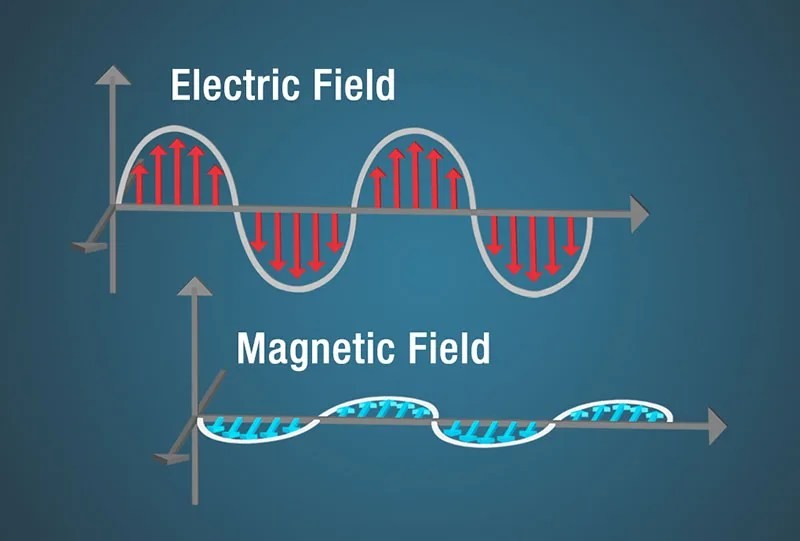 Frequency as the measurement of the number of wave crests that pass a given point in a second.
Frequency as the measurement of the number of wave crests that pass a given point in a second.
18. Are Light Waves Particles or Waves?
Light is made of discrete packets of energy called photons. Photons carry momentum, have no mass, and travel at the speed of light. All light has both particle-like and wave-like properties. How an instrument is designed to sense the light influences which of these properties are observed. An instrument that diffracts light into a spectrum for analysis is an example of observing the wave-like property of light. The particle-like nature of light is observed by detectors used in digital cameras—individual photons liberate electrons that are used for the detection and storage of the image data.
19. What is Polarization?
One of the physical properties of light is that it can be polarized. Polarization is a measurement of the electromagnetic field’s alignment. In the figure above, the electric field (in red) is vertically polarized. Think of a throwing a Frisbee at a picket fence. In one orientation it will pass through, in another it will be rejected. This is similar to how sunglasses are able to eliminate glare by absorbing the polarized portion of the light.
20. What Terms Describe Electromagnetic Energy?
The terms light, electromagnetic waves, and radiation all refer to the same physical phenomenon: electromagnetic energy. This energy can be described by frequency, wavelength, or energy. All three are related mathematically such that if you know one, you can calculate the other two. Radio and microwaves are usually described in terms of frequency (Hertz), infrared and visible light in terms of wavelength (meters), and x-rays and gamma rays in terms of energy (electron volts). This is a scientific convention that allows the convenient use of units that have numbers that are neither too large nor too small.
21. What is Frequency?
The number of crests that pass a given point within one second is described as the frequency of the wave. One wave—or cycle—per second is called a Hertz (Hz), after Heinrich Hertz who established the existence of radio waves. A wave with two cycles that pass a point in one second has a frequency of 2 Hz.
22. What is Wavelength?
Electromagnetic waves have crests and troughs similar to those of ocean waves. The distance between crests is the wavelength. The shortest wavelengths are just fractions of the size of an atom, while the longest wavelengths scientists currently study can be larger than the diameter of our planet
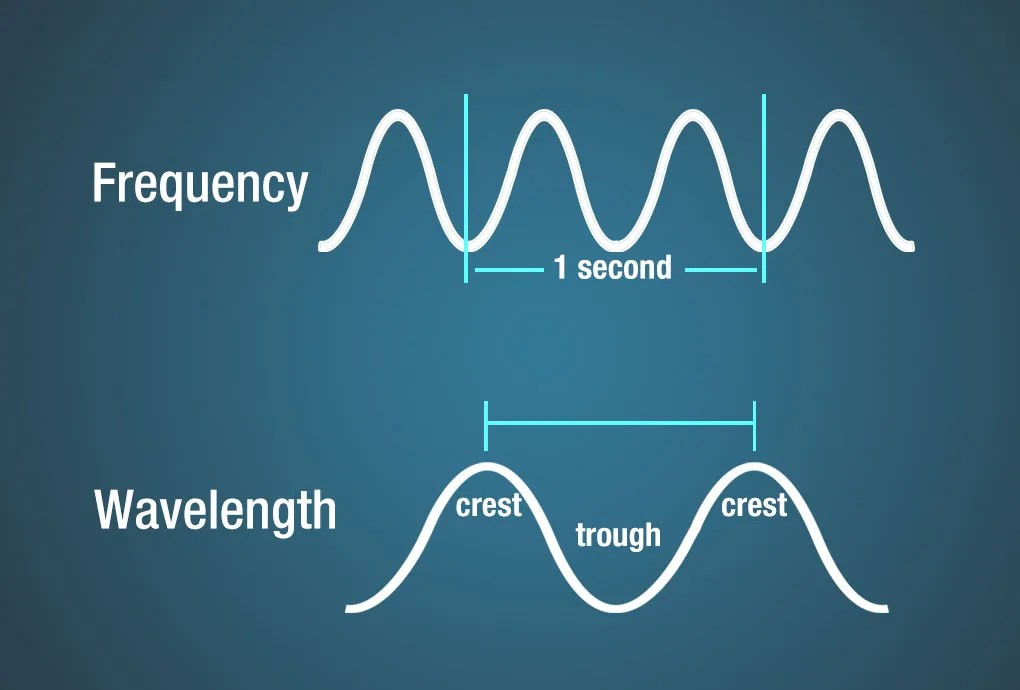 Wavelength is measured as the distance between two crests.
Wavelength is measured as the distance between two crests.
23. What is Energy?
An electromagnetic wave can also be described in terms of its energy—in units of measure called electron volts (eV). An electron volt is the amount of kinetic energy needed to move an electron through one volt potential. Moving along the spectrum from long to short wavelengths, energy increases as the wavelength shortens. Consider a jump rope with its ends being pulled up and down. More energy is needed to make the rope have more waves.
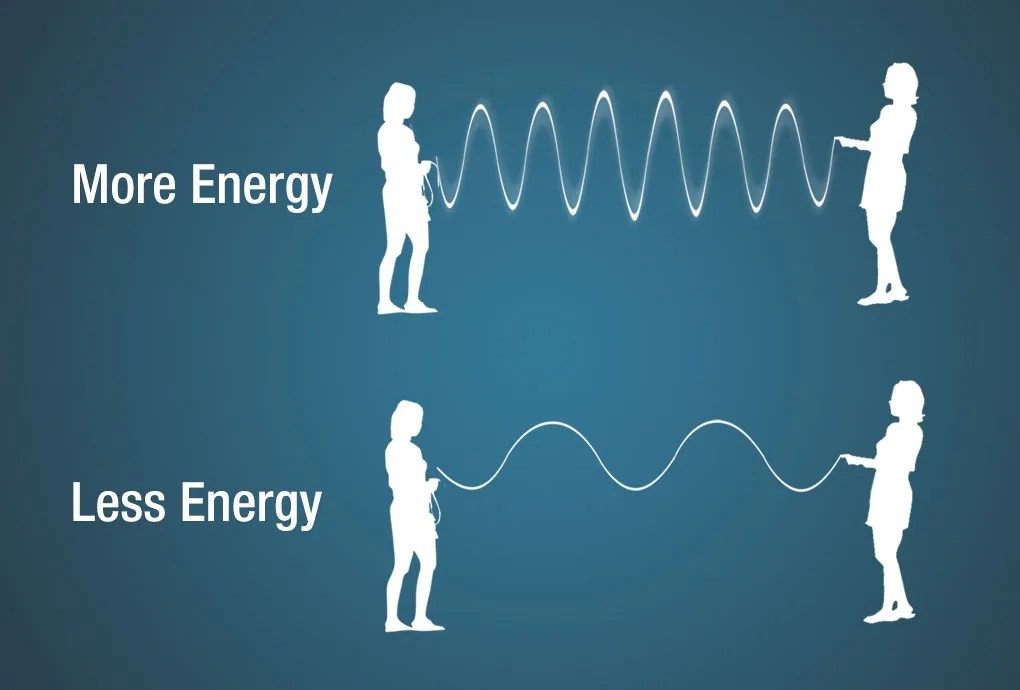 The image relates wave crests to short and long wavelengths.
The image relates wave crests to short and long wavelengths.
24. Planning Your Trip to Vietnam
Now that you understand how light behaves in water, you’re better prepared to explore Vietnam’s stunning coastal regions. Whether you’re interested in diving, snorkeling, or simply enjoying the beach, understanding these principles can enhance your experience.
25. How SIXT.VN Enhances Your Travel Experience in Vietnam
Planning a trip to Vietnam can be exciting, but it also comes with its challenges. SIXT.VN is here to help make your travel experience seamless and enjoyable.
-
Travel Consultations: SIXT.VN offers expert travel advice to help you plan your itinerary.
-
Airport Transfers: Start your trip stress-free with reliable airport transfer services.
-
Hotel Bookings: Find the perfect accommodation with a variety of hotel options to suit your budget and preferences.
-
Tour Bookings: Explore the beauty of Vietnam with expertly curated tour packages.
-
Flight Bookings: Enjoy the convenience of booking your flights through SIXT.VN.
With SIXT.VN, you can focus on enjoying your trip while we take care of the logistics.
26. Why Choose SIXT.VN for Your Vietnam Trip?
SIXT.VN offers numerous advantages for travelers to Vietnam:
-
Convenience: A one-stop platform for all your travel needs.
-
Reliability: Dependable services that ensure a smooth travel experience.
-
Expertise: Local knowledge and expertise to guide you.
-
Support: Dedicated customer support to assist you at every step.
SIXT.VN is committed to providing you with the best travel experience in Vietnam.
27. Tips for Exploring Vietnam’s Coastal Regions
Vietnam boasts a diverse coastline with numerous opportunities for exploration:
-
Phu Quoc: Known for its pristine beaches and clear waters, perfect for diving and snorkeling.
-
Nha Trang: A vibrant coastal city with excellent diving spots and beautiful bays.
-
Ha Long Bay: A UNESCO World Heritage site with stunning limestone karsts and emerald waters.
-
Da Nang: Home to beautiful beaches like My Khe and Non Nuoc, offering a mix of relaxation and adventure.
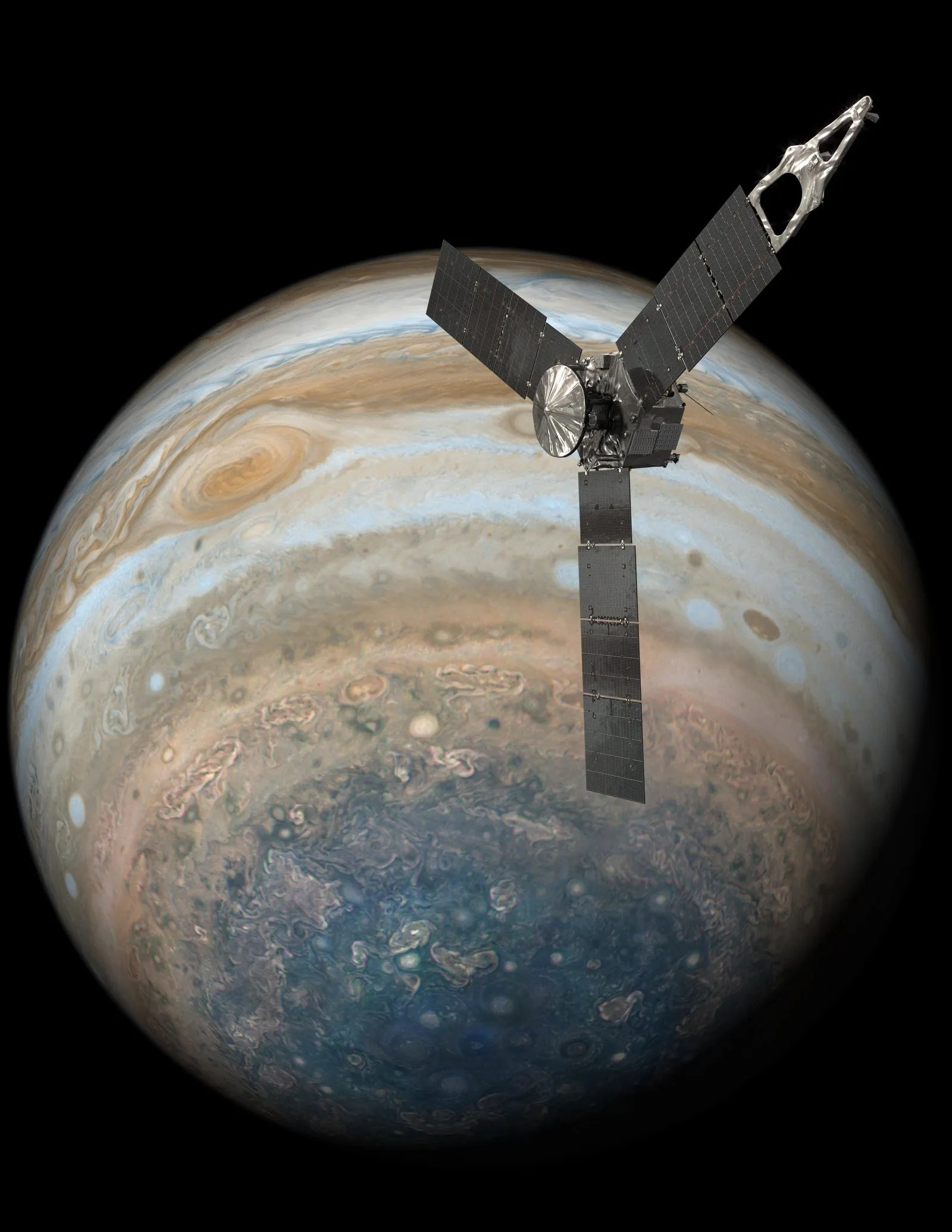 Ha Long Bay offers great views of stunning limestone karsts.
Ha Long Bay offers great views of stunning limestone karsts.
28. Booking Your Trip with SIXT.VN: A Step-by-Step Guide
Booking your trip with SIXT.VN is easy and straightforward:
-
Visit the SIXT.VN Website: Navigate to SIXT.VN on your web browser.
-
Select Your Services: Choose from travel consultations, airport transfers, hotel bookings, tour bookings, and flight bookings.
-
Enter Your Details: Provide your travel dates, destinations, and preferences.
-
Review Options: Browse the available options and select the ones that best suit your needs.
-
Confirm and Pay: Confirm your booking and proceed to secure payment.
-
Receive Confirmation: Receive instant confirmation and detailed travel information.
For personalized assistance, you can contact SIXT.VN via:
-
Address: 260 Cau Giay, Hanoi, Vietnam.
-
Hotline/WhatsApp: +84 986 244 358.
-
Website: SIXT.VN.
29. Overcoming Challenges in Planning Your Vietnam Trip
Planning a trip to Vietnam can present certain challenges:
-
Language Barriers: Navigating communication can be difficult.
-
Cultural Differences: Understanding local customs and etiquette is important.
-
Logistics: Arranging transportation and accommodations can be time-consuming.
-
Finding Reliable Services: Ensuring the quality and reliability of travel services.
SIXT.VN addresses these challenges by providing comprehensive support, local expertise, and reliable services, making your trip planning process smooth and stress-free.
30. Discover Vietnam with Confidence
Understanding how light waves travel through water and the impact on marine life can enhance your appreciation for Vietnam’s coastal environments. Let SIXT.VN be your guide to exploring the underwater world and the stunning landscapes of Vietnam with ease and confidence.
FAQ About Light Waves and Underwater Optics
-
Do all colors of light travel the same distance in water?
No, different colors of light are absorbed at different rates in water. Red and orange light are absorbed more quickly, while blue and green light penetrate deeper.
-
How does water clarity affect underwater visibility?
Clear water allows light to travel further, improving underwater visibility. Turbid water, with suspended particles, reduces visibility by scattering and absorbing light.
-
Why does the ocean appear blue?
The ocean appears blue because water molecules absorb red light and scatter blue light. This scattering effect makes the ocean appear blue, especially in deep waters.
-
Can artificial light affect marine life?
Yes, artificial light can disrupt the natural light cycles that marine organisms rely on for various biological processes, affecting their behavior and reproduction.
-
What is Snell’s Window, and how is it formed?
Snell’s Window is a circular area of light that appears directly above an underwater observer. It is formed by the refraction of light at the water’s surface.
-
How can divers improve their visibility underwater?
Divers can improve visibility by choosing clear water, diving during good weather, using artificial lighting, cleaning their masks, and positioning themselves correctly.
-
What role does photosynthesis play in marine ecosystems?
Photosynthesis, carried out by phytoplankton, forms the base of the food web in most aquatic ecosystems by converting light energy into chemical energy.
-
What are the main types of light scattering in water?
The main types of light scattering in water are Rayleigh scattering (by small particles) and Mie scattering (by larger particles).
-
How does depth affect the color composition of light underwater?
As depth increases, colors are selectively absorbed. Red light is absorbed first, followed by orange and yellow, leaving green and blue light to dominate in deeper waters.
-
How can SIXT.VN help me plan my trip to explore Vietnam’s coastal regions?
SIXT.VN offers travel consultations, airport transfers, hotel bookings, tour bookings, and flight bookings to ensure a seamless and enjoyable travel experience in Vietnam.



